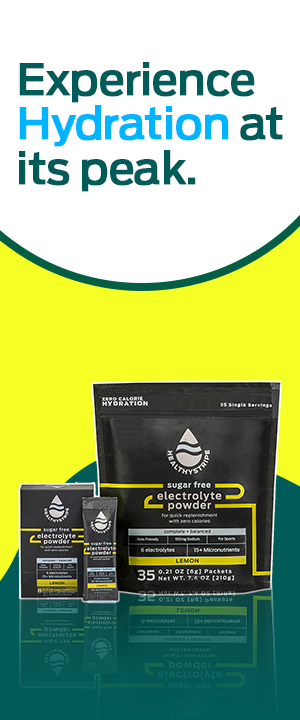Dry drowning: Symptoms, causes, and Treatment

It was a slow Wednesday afternoon at the Jones household. The kids were frolicking. Mom was working from home and dad had just finished his workout. Half an hour later, the family were in the Emergency Room at the local hospital. Little Sarah had suddenly collapsed in a fit of coughing, unable to breathe, clawing for air.
How could splash around in the bathtub lead to this?
The answer- Dry Drowning.
Dry Drowning
Drowning is one of the scariest situations a person may experience. The helplessness, the flailing, the seeming inevitability of the situation as the vision blurs and our life force seems to bubble away.
Until fairly recently, drowning was categorized as either dry drowning or wet drowning. Wet drowning is the kind of drowning that most of us are familiar with. It is the kind most commonly portrayed in popular media and was said to happen when water or another liquid fills up our lungs.
Dry drowning is wet drowning’s rarer yet insidious cousin.
Definition of dry drowning
Dry drowning was defined as a type of drowning in which water or liquid did not reach the victim’s lungs. when someone takes in a small amount of water through their nose and/or mouth, and it causes a spasm that makes the airway close up. Symptoms developed within a few hours of submersion.
Notice the usage of the past tense in the first paragraph. As the medical community’s understanding of drowning matured, it became clear that it a paucity of oxygen was the main culprit behind drowning and not liquid content in the lungs. Today, the term ‘dry drowning’ is less commonly used and is treated as somewhat of a misnomer.
Dr Stephen Robert gives a more modern definition-“The term ‘dry drowning’ refers to an acute lung injury caused by water aspiration that would develop over minutes to hours after exposure and could progress to respiratory failure.”
Read Also: Is Tap Water Safe to Drink?
Explanation of how Dry Drowning Occurs
Dry drowning is a result of a submersion incident. When we are suddenly submerged underwater, we instinctively open up our noses and mouth. This causes water to rush in, potentially damaging our airways and lungs and impeding our ability to breathe normally, lowering oxygen levels in our bloodstream. This is the general sequence of events for drowning.
In dry drowning, the submersion is often brief and water usually does not reach the lungs. However, it may harm the upper airway. The liquid causes the muscles in our voice box and vocal folds to spasm. This is known as a laryngospasm and leads to mild to severe difficulty in breathing. If this spasm is not managed quickly, it may even prove to be fatal.
In our story, Sarah had submerged herself in the bathtub pretending to be a scuba diver and water had inadvertently entered her airway. This led to her symptoms within minutes of coming out of the bathtub.
Read Also: Water Fasting: Tips, Benefits and Dangers
Symptoms of Dry Drowning
The symptoms of dry drowning develop within a few minutes to an hour or so after the submersion incident. It is almost exclusively seen in young children.
Some of the symptoms you should be on the lookout for are –
- Coughing that is uncontrollable or continuous in nature
- Wheezing- a rattling or whistling noise that may emanate from the chest during breathing
- Lightheadedness or dizziness may occur from an inadequate oxygen supply to the brain due to laryngospasm
- Drowsiness
- Confusion with regard to time, place or person
- A rapid-paced and laboured breathing
- Altered or abnormal breathing patterns
- Difficulty in breathing
- Foaming from the nose or mouth
Risk Factors for Dry Drowning
Risk factors for dry downing include
- Moderate to long submersion period
- Frequent submersion
- Predisposition to airway disorders
- Pre-existing conditions like epilepsy
Read Also: How Long Can You Live Without Water? It’s Fact Time!
Diagnosis and Treatment of Dry Drowning
Being aware of the symptoms mentioned above will help you swiftly take medical action and treat dry drowning.
- Remain calm. Panic is your worst enemy in such situations whereas staying calm may even help your child regulate their breathing.
- Call emergency services
- In the meantime, perform CPR if you are trained to do so or find someone nearby who is.
- In the hospital, the child is monitored for a few hours to a day or so. If needed airway maintenance procedures are performed. This is rare. Vitals and Oxygen saturation are checked and your child should be home soon with a smile on their face.
However, prevention is better than cure.
- Supervision is key. Kids have a unique talent for getting themselves into dangerous solutions so always monitor them when they’re in the water.
- Learn and teach your kids how to swim
- Use lifevests
- Learn to administer CPR
- Always swim in the presence of others, preferably a lifeguard
Conclusion
Dry drowning may seem like a scary thing and it is. Fortunately, it’s quite rare and may easily be prevented. If it does develop, swift, calm action will ensure that it does not progress to something more dangerous such as water in the lungs or bacterial pneumonia. Practice safety around water and enjoy yourself!
FAQs
How long does it take for dry drowning to show symptoms?
Does dry drowning go away on its own?
Occasionally, by keeping calm and trying to regulate breathing, dry drowning can go away on its own but it’s always advisable to see a doctor immediately.
How do I know if my child inhaled water?
The symptoms listed above will give you a good idea as to whether your child has inhaled water.
How much water do you need to inhale for dry drowning?
There are no such hard and fast limits and the amount of water needed to trigger dry drowning varies widely among individuals.









